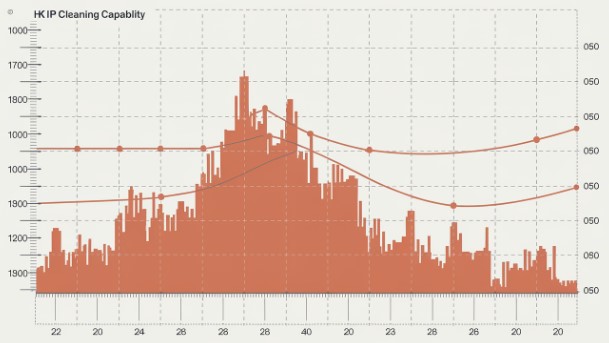High defense IP cleaning capabilities in Hong Kong’s hosting infrastructure face dynamic challenges that can lead to performance fluctuations. These variations in DDoS protection effectiveness stem from multiple interconnected factors within the region’s unique digital ecosystem. Understanding these elements is crucial for businesses relying on robust server security and stable hosting services.
Network Infrastructure and Regional Factors
Hong Kong’s strategic position as a major internet hub in Asia creates distinct advantages and challenges for high defense IP services. The region’s network infrastructure characteristics directly influence cleaning capability stability.
| Infrastructure Component | Impact on Cleaning | Stability Factor |
|---|---|---|
| Backbone Connectivity | Direct influence | High |
| International Bandwidth | Variable impact | Medium |
| Regional Routing | Indirect effect | Moderate |
Primary Factors Affecting Cleaning Capability
- Bandwidth Resource Distribution
- Dynamic allocation systems
- Peak usage patterns
- Resource sharing mechanisms
- Attack Pattern Complexity
- Evolution of DDoS techniques
- Mixed attack vectors
- Traffic signature variations
- Infrastructure Load Balancing
- Server distribution efficiency
- Network path optimization
- Resource utilization rates
Technical Analysis of Cleaning Fluctuations
The variation in cleaning capabilities often manifests through specific technical patterns that network engineers can identify and address. Understanding these patterns enables hosting providers to implement more effective mitigation strategies.
| Time Period | Cleaning Efficiency | Contributing Factors |
|---|---|---|
| Peak Hours | Variable | High concurrent requests |
| Off-Peak | Stable | Resource availability |
| Attack Events | Fluctuating | Attack complexity |
Critical Performance Indicators:
- Packet processing speed under various load conditions
- Traffic pattern recognition accuracy
- System response time during multi-vector attacks
- Resource allocation efficiency across cleaning nodes
- Recovery time post-heavy attack scenarios
Infrastructure Impact Assessment
The relationship between infrastructure capacity and cleaning performance demonstrates complex interdependencies. Service stability relies heavily on the systematic management of these interconnected elements.
Infrastructure Elements Affecting Cleaning Stability:
- Network Architecture
- Backbone capacity utilization
- Border router configuration
- Traffic distribution mechanisms
- Processing Systems
- Hardware acceleration capabilities
- Load balancing efficiency
- Resource allocation algorithms
- Monitoring Systems
- Real-time analysis capabilities
- Pattern recognition accuracy
- Response time optimization
Mitigation Strategies and Solutions
Effective management of cleaning capability fluctuations requires implementation of comprehensive mitigation strategies. These approaches focus on both preventive measures and reactive capabilities.
| Strategy Type | Implementation Focus | Expected Impact |
|---|---|---|
| Proactive Monitoring | Early detection systems | Reduced fluctuation impact |
| Resource Optimization | Dynamic allocation | Enhanced stability |
| Infrastructure Upgrades | Capacity enhancement | Improved resilience |
Key Implementation Aspects:
- Advanced traffic analysis systems deployment
- Multi-layer protection mechanism integration
- Automated resource scaling implementation
- Cross-region backup capacity maintenance
- Continuous performance monitoring protocols
Best Practices for Service Stability
Maintaining consistent high defense IP cleaning capabilities requires adherence to industry best practices and continuous system optimization. Hosting providers must implement comprehensive management strategies to ensure service reliability.
Essential Implementation Guidelines:
- Regular Infrastructure Assessment
- Weekly performance audits
- Capacity utilization analysis
- System bottleneck identification
- Proactive Resource Management
- Dynamic resource allocation
- Load prediction modeling
- Scaling threshold optimization
- Emergency Response Protocols
- Rapid response team deployment
- Incident management procedures
- Recovery process automation
| Practice Area | Implementation Level | Impact on Stability |
|---|---|---|
| System Monitoring | Continuous | High |
| Resource Planning | Regular | Significant |
| Protocol Updates | Periodic | Moderate |
Future Trends and Adaptations
The evolution of attack methodologies and defense technologies continues to shape the landscape of high defense IP services. Understanding emerging trends enables proactive adaptation of cleaning capabilities.
Emerging Technology Impacts:
- Machine Learning Integration
- Pattern recognition enhancement
- Predictive analysis capabilities
- Automated response optimization
- Infrastructure Evolution
- Edge computing integration
- Network virtualization advances
- Processing capability improvements
- Protection Methodology Updates
- Advanced filtering techniques
- Multi-layer defense strategies
- Real-time adaptation mechanisms
Conclusion and Recommendations
Understanding and managing high defense IP cleaning capability fluctuations in Hong Kong requires a comprehensive approach combining technical expertise, infrastructure optimization, and strategic planning. The dynamic nature of DDoS attacks and network conditions necessitates continuous adaptation and improvement of protection mechanisms.
Strategic Implementation Points:
- Maintain robust monitoring and early warning systems
- Implement flexible resource allocation mechanisms
- Develop comprehensive incident response protocols
- Ensure regular infrastructure assessment and optimization
- Invest in advanced protection technologies and expertise
By focusing on these critical aspects of high defense IP management, hosting providers can maintain more stable and reliable cleaning capabilities while adapting to evolving security challenges in the Hong Kong market.


